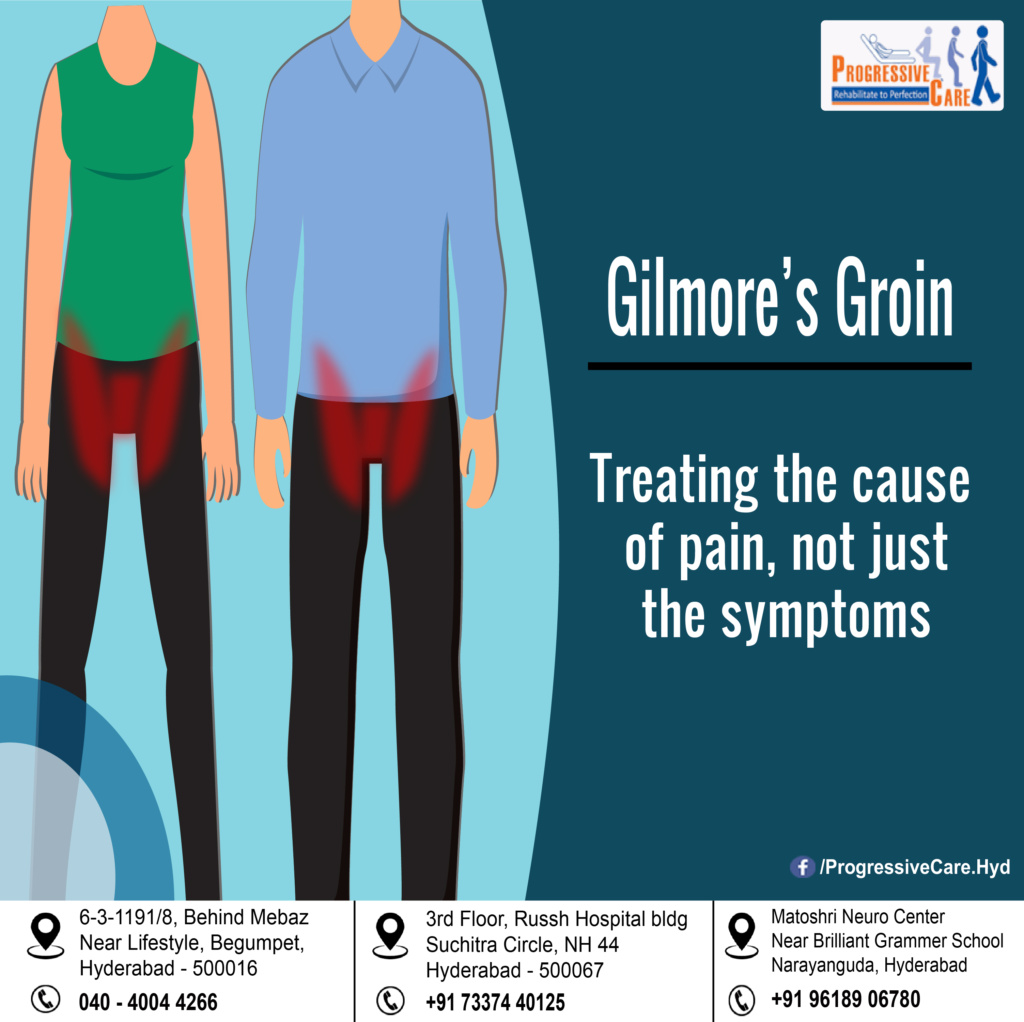Gilmore’s Groin

GILMORE’S GROIN
Gilmore’s groin also known as sports hernia, inguinal disruption or athletic pubalgia (It is not related to common hernia). Gilmore’s groin is a muscular groin pain involving the groin region (groin is the area where the lower abdomen joins the thigh region) and aponeurosis (area where the abdomen muscles converge to form inguinal ligament). It is one of the frequent conditions typically acquired by athletes who are involved in sports like football, rugby which have frequent movements like kicking, twisting etc.,
Symptoms :
Symptoms develop gradually over time, which include:
- Groin pain which increases on activities like running, kicking, turning, twisting.
- Stiffness or soreness is developed after playing.
- Gradually pain is experienced even on turning or getting out of the car.
- Later, activities like coughing and sneezing may also cause pain in groin area.
Diagnosis:
- Physical examination
- Imaging studies such as Ultrasound, MRI, herniography, laparoscopy may also help.
Treatment:
- Adequate rest to promote healing of damaged tissues.
- Medical treatment
- Conservative treatment – Physiotherapy rehabilitation
- Surgical treatment – If not responded through rehabilitation, surgery may be required. The key to recovery after surgery is based on rehabilitation, the fitter the patient is before the surgery, the quicker will be the recovery postoperative.
Physiotherapy rehabilitation – Enables to gain maximal recovery.
Aim: 1. To decrease pain
- To decrease muscle tightness
- To restore range of motion
- To restore muscle strength
Rehabilitation mainly focuses on:
- Core strengthening exercises – these include muscles transverse abdominals and multifidus which act as stabilising muscles for the trunk and pelvis.
- Groin exercises – it is important to strengthen the groin muscles, initially core strengthening is performed later progress to groin exercises as soon as they are pain free to perform.
- Stretching – it is done to improve the flexibility of the muscles at the hip joint as a whole. Stretches are performed for groin muscles, hip flexors, hamstring and gluteus muscles.
Check out these links for relevant information: Pain
management
6-8 weeks rehabilitation program is also required postoperatively, which mainly focuses on strengthening exercises.
Please reach out to us for more 040-40044266/9618906780/7337440125
